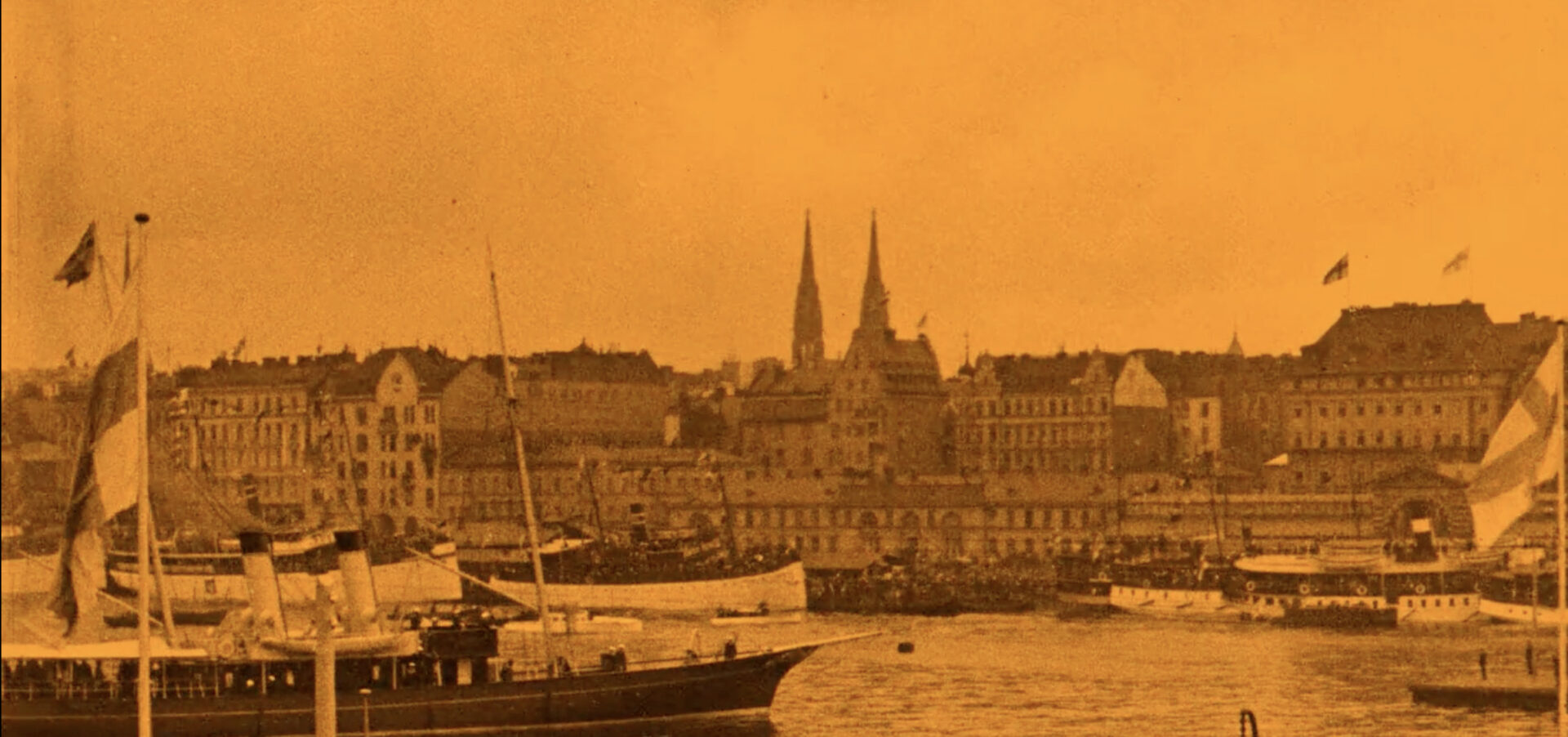
The Port of Helsinki In movies
The Port of Helsinki has either been glimpsed or has played a variety of larger roles in movies, documentaries and newsreels since the beginning of the last century.
According to the National Audiovisual Institute (KAVI), the Port of Helsinki has appeared in about a hundred fictional films over the years. One of the most famous is, of course, Song of Warsaw. There have been even more documentaries, such as Me matkustamme Helsingistä Hulliin (We Travel from Helsinki to Hull) and Kolmen kaupungin kasvot (The Faces of Three Cities). The port has been featured in even more newsreels.
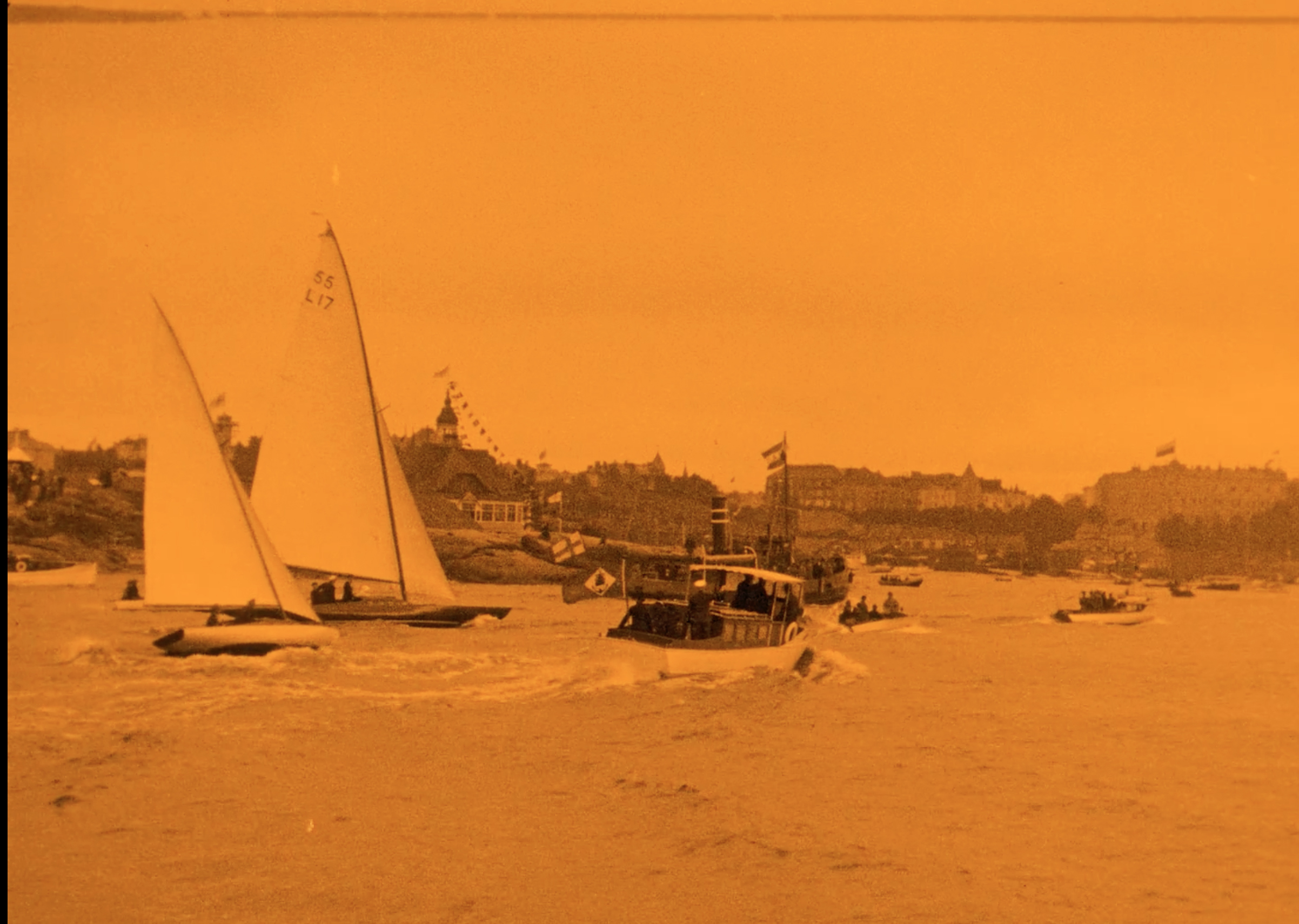
A visit from the Swedish royal couple in 1925
Suomi-Filmi Oy’s silent documentary Ruotsin kuningasparin vierailua (A Visit from the Swedish Royal Couple, 1925) follows the Swedish King Gustaf V and wife Queen Victoria during their four-day state visit to Finland in August 1925. In addition to Helsinki, the royal couple also visited Savonlinna and Vyborg. Two current affairs documentaries were released on the subject.
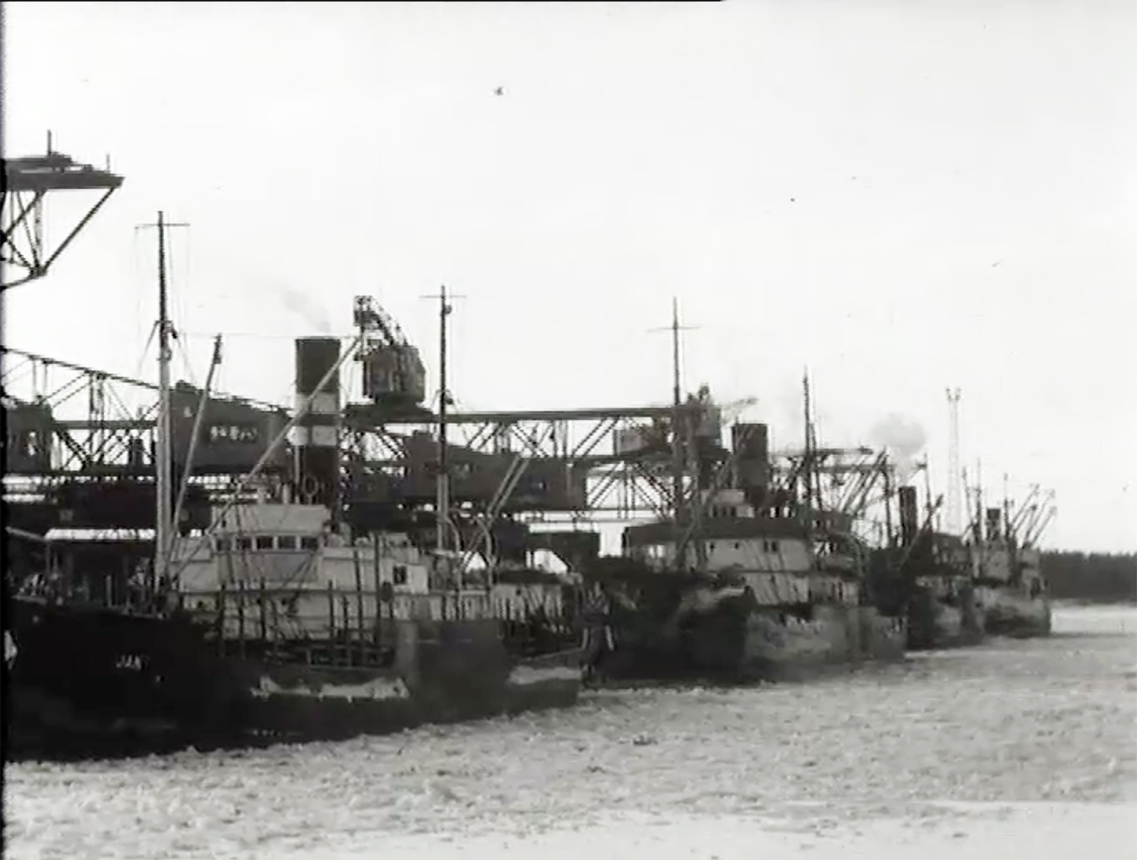
Helsinki’s winter harbours in 1954
In 1954, a decision was made to keep the Port of Helsinki heavily trafficked throughout the winter, so icebreakers helped numerous ships into port and back out into the open sea. A mild winter with late ice cover helped to keep maritime traffic operational. A considerable number of cars were also imported via Helsinki harbours that winter.
Danish royal family in Helsinki
The Danish royal family – King Frederick IX, Queen Ingrid and Crown Princess Margrethe – visited Finland in 1958. According to the newsreels, beautiful pictures and flower arrangements in Danish colours were displayed in shop windows. A large crowd watched as the royal party came ashore at the Market Square, where they were greeted by Sylvi and Urho Kekkonen.
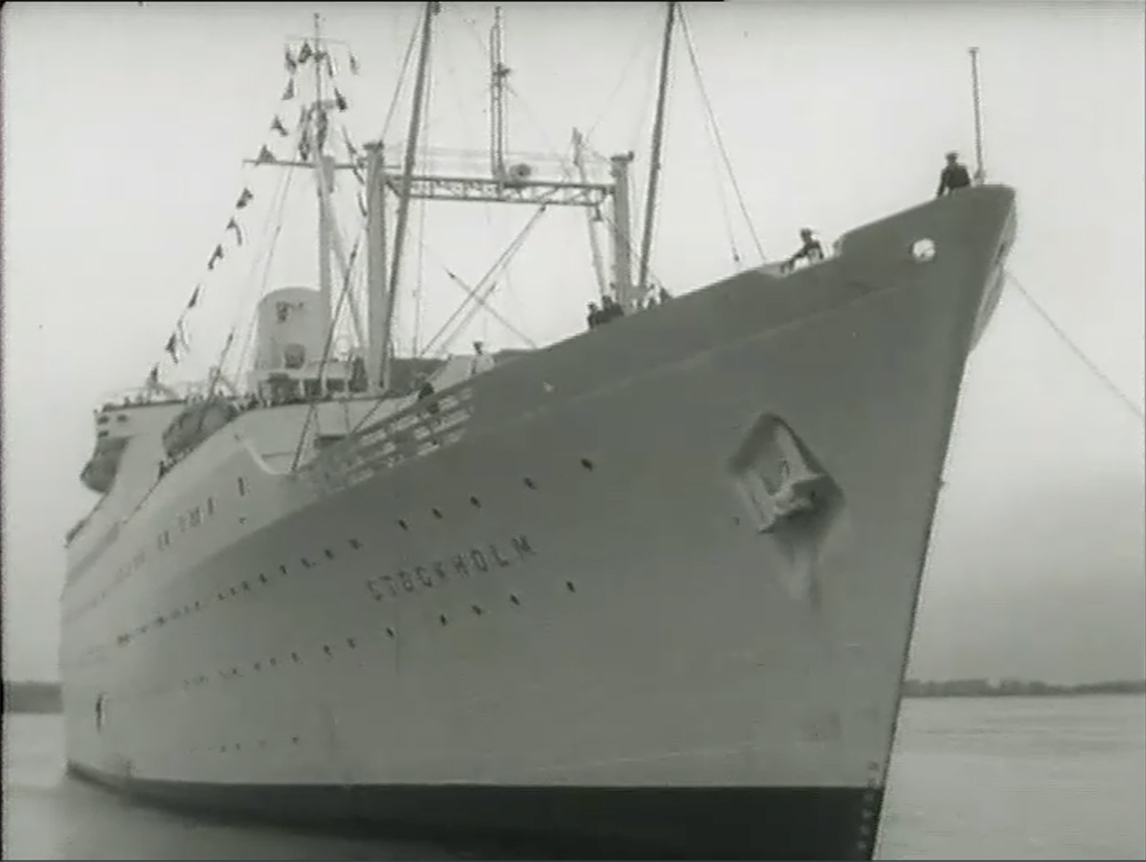
Finnish Americans arrive on S/S Stockholm
The first shipload of Finnish Americans arrived for a visit to their former homeland in 1959 aboard the Swedish-American liner S/S Stockholm. The visit of these Finnish Americans was an interesting event at the time, and the Finland Society organised a festive reception on the quay. A welcome speech was given by Rainer von Fieandt (Prime Minister of Finland, 1957–58). It was also the ship’s first visit.
A hundred “twin town” visitors from Sweden visited Finland the following year (1960). This ship brought the guests to the South Harbour, where a grand reception ceremony was held on the Olympic pier.
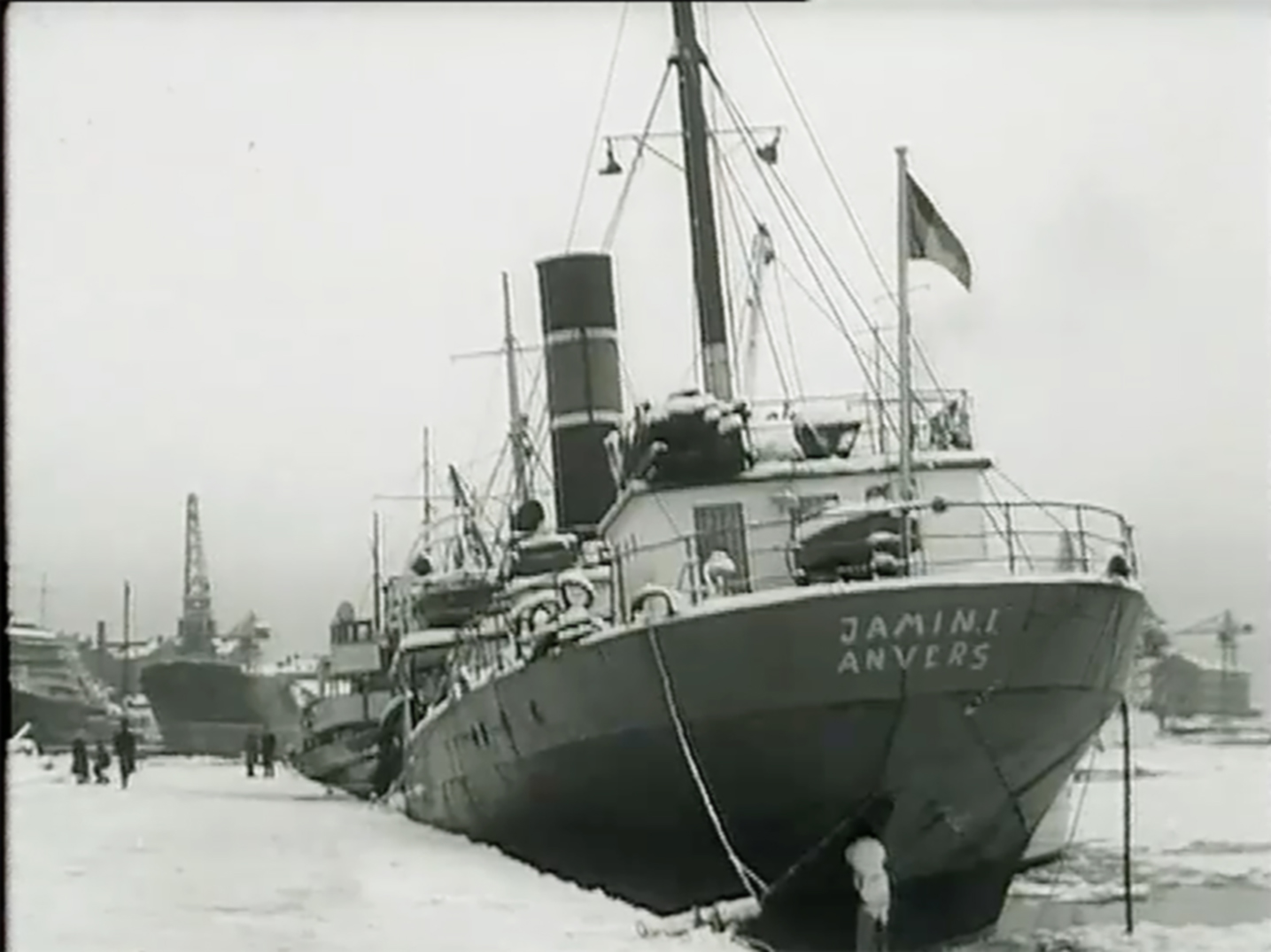
Belgian vessel wrecked off Helsinki
The shipwreck of the Belgian cargo ship Jamin to the west of Harmaja Island aroused a great deal of interest in 1960. The vessel was refloated and towed to the Port of Helsinki for closer inspection. The sea’s swell had caused considerable damage to the ship while it was grounded, but its cargo had already been successfully moved to Helsinki.
Through the Ice to Finland
The English-language documentary Through the Ice to Finland tells the story of a boat trip to Finland in 1962. According to the passengers, the trip went very well indeed and the ice didn’t cause any changes to the ship’s schedule. The English commentary says that “Finland is one big winter sports centre.”
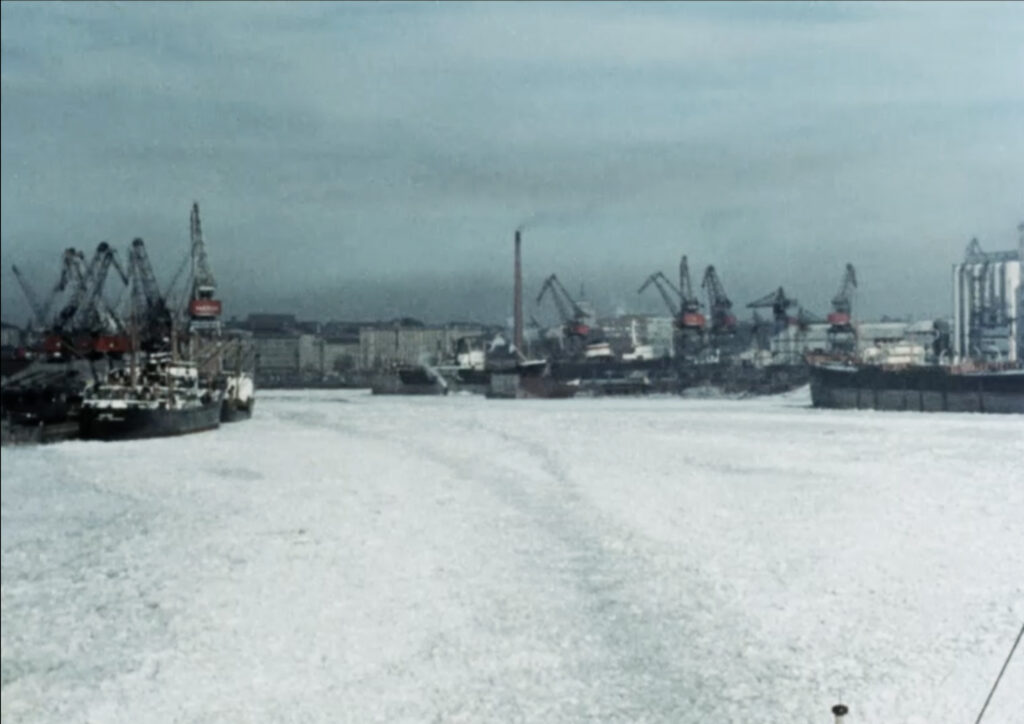
The icebreaker Karhu at work
In 1962, Suomi-Filmi Oy produced a documentary film about winter shipping past and present. It was directed by Valentin Vaala and written by Usko Kemppi. In the documentary, we watch the icebreaker Karhu towing ships, experience the passage of a full day as seen from the ship, and see interior shots of the crew at work. In the exterior shots, we approach Helsinki, see a harbour crane and icebreaker in action, and view the landscape from the icebreaker. Mail and goods, such as milk churns, are transferred from the icebreaker onto the ice from where they will be taken into the city.
Elonet also has a 1926 documentary about the icebreaker Jääkarhu.
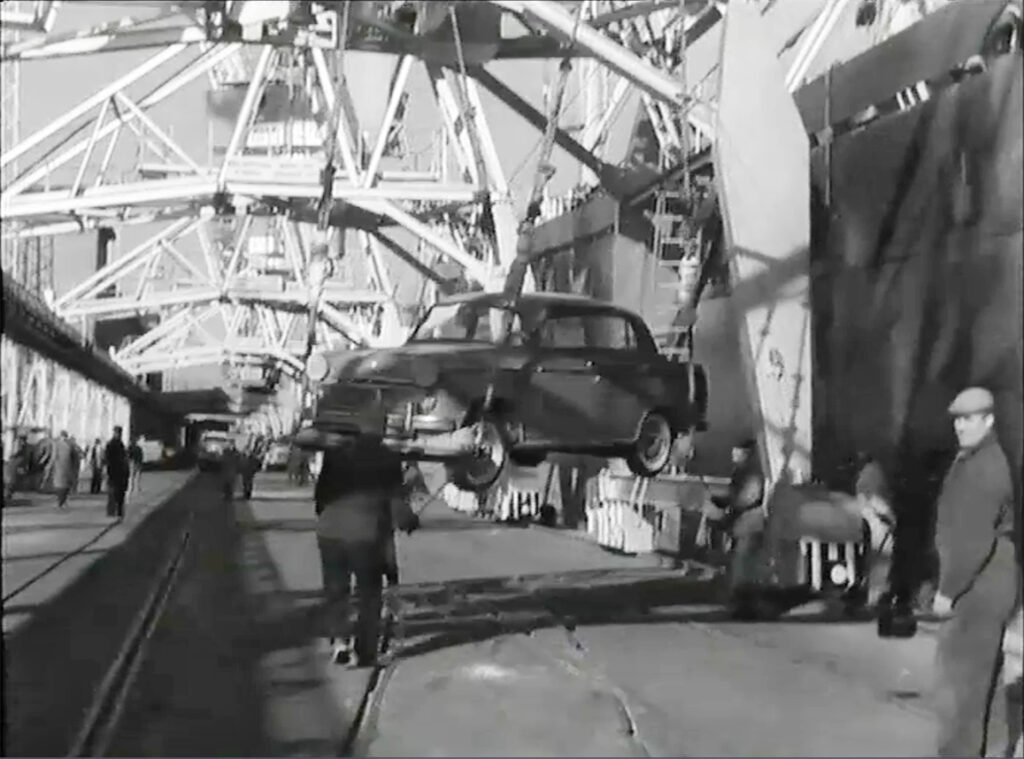
Finland gets Europe’s first Japanese cars
“Finland was the first country in Europe to get Japanese cars,” says a news flash dating from 1962. The documentary shows cars being lifted off a ship in the Port of Helsinki in 1962. As many as 700 cars arrived in Finland, “packed with a level of care that has never been seen before.” According to the documentary: “The four-cylinder engine of this graceful vehicle reaches a top speed of 139 km/h, and time has been spent on ensuring that it is safe, durable and economical.”
Source: National Audiovisual Institute (KAVI) and Elonet
More about
You can explore the worlds of these films yourself at:
elonet.finna.fi with the search words +satama +helsinki
If you prefer reading, you can visit the library to find this Finnish-language book about Finland’s national filmography, Suomen kansallisfilmografia 1−12, 1907−2000, edited by Kari Uusitalo.





